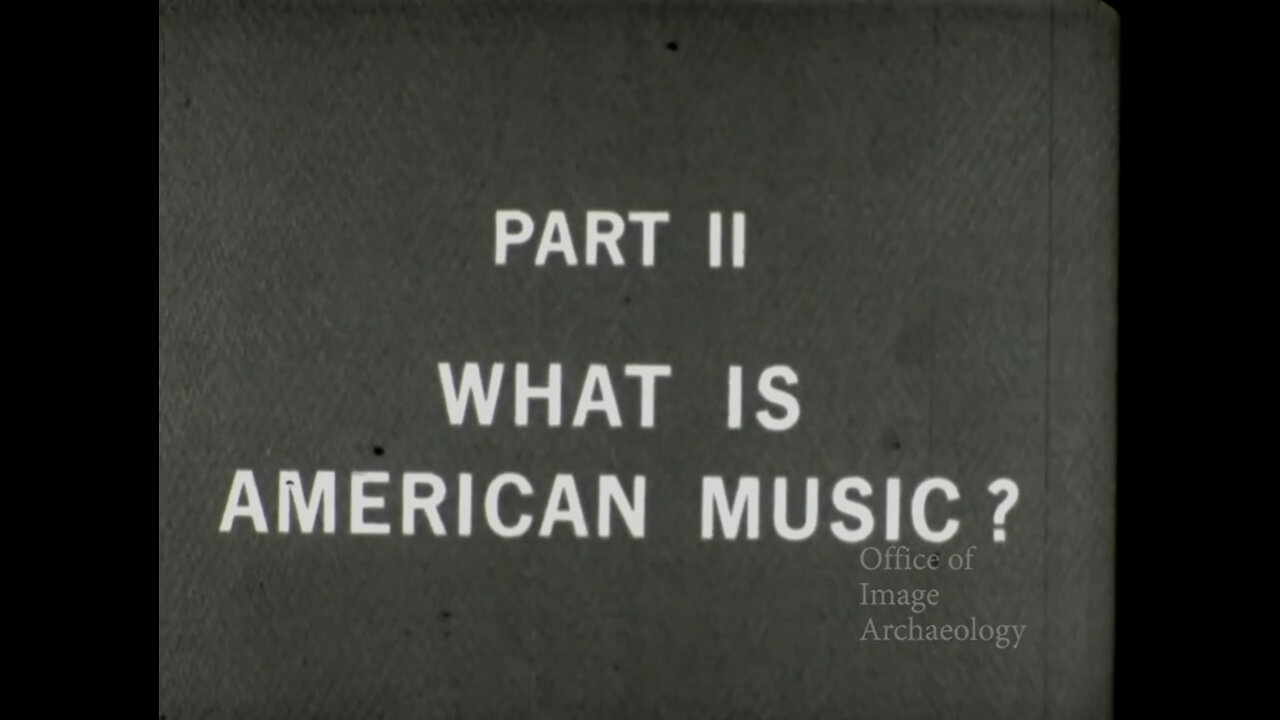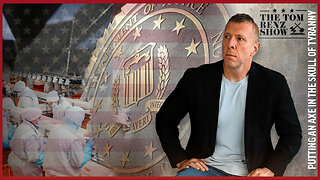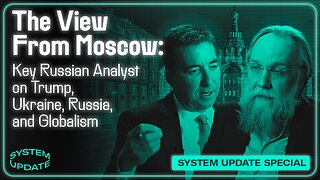Premium Only Content

1964, TELECINE, "WHAT IS AMERICAN MUSIC", PT2, NEW YORK PHILHARMONIC, YOUNG PEOPLE'S CONCERTS
1964, TELECINE, PT2, Leonard Bernstein and the New York Philharmonic Young People's Concert series, "WHAT IS AMERICAN MUSIC"
Part 2
With George Gershwin’s “Rhapsody in Blue” 1924 we had developed music that everybody recognized as really American.
It was not until the 1930s that we entered what may be called the college period in American music, When composers use the rhythm and style of jazz to write music that was American without being really jazz. An organ piece by Roger Sessions illustrates this.
What then makes American music? The elements are defined as;
A, Syncopation, rhythms characterized by strong accents off the beat.
B, Youth and vitality, illustrated by the performance of William Shuman’s “American Festival Overture”.
C, pioneer energy. The orchestra plays Roy Harris Third symphony”.
D, Loneliness of the Prairie. Copeland’s “Quiet Night on the Prairie” from “Billy the Kid” is played.
E, Sentimentality, derived from hymn singing, as in Virgil Thomson’s “The Mother Of Us All”.
F, Crooning sentimentality, taken from popular ballads, as in Randall Thompson’s Second Symphony”.
There are many sides of our music as there are section and speech differences in the different parts of our country, our folk music is the richest in the world.
The program is summarized by the performance of Aaron Copeland’s Third Symphony, “Last Movement”, conducted by the composer. This piece in bodies all elements of the analysis listed above.
-
 1:03:55
1:03:55
The Tom Renz Show
9 hours agoBongino In At FBI & Is Factory Meat Made of Cancer?
5.04K3 -
 7:03
7:03
Dangerous Freedom
16 hours agoBest Tiny Budget Red Dot? (Honest Review - Gideon Optics Judge).
601 -
 10:32
10:32
ariellescarcella
12 hours ago"Being Trans Made Me Gay" : Hormone Science Explained
63 -
 1:02:09
1:02:09
PMG
9 hours ago $0.14 earnedTrump to BAN the COVID Vaxx?! mRNA in Your Organic Meat?! w/ Kim Bright
4293 -
 2:42:10
2:42:10
TimcastIRL
13 hours agoTrump To SHUTTER 120 IRS Offices In MASS PURGE, Democrat LEAKED Tax Info w/Mike Crispi | Timcast IRL
212K80 -
 3:21:29
3:21:29
Alex Zedra
12 hours agoLIVE! New Game | R.E.P.O
60.2K7 -
 1:52:42
1:52:42
Kim Iversen
14 hours ago💰 CHA-CHING! 💰 Trump Unveils Big Money Plans For Gaza AND America
77.2K209 -
 1:05:28
1:05:28
Flyover Conservatives
1 day agoUkraine’s Dirty Secret: The Christian Persecution No One Wants to Talk About - Alex Newman | FOC Show
76.8K26 -
 2:00:20
2:00:20
Glenn Greenwald
19 hours agoThe View from Moscow: Key Russian Analyst Aleksandr Dugin on Trump, Ukraine, Russia, and Globalism | SYSTEM UPDATE #414
185K74 -
 1:10:55
1:10:55
Donald Trump Jr.
16 hours agoBREAKING NEWS: My Father Revokes Biden-Maduro Oil License, LIVE with Maria Corina Machado | Triggered Ep.220
239K222